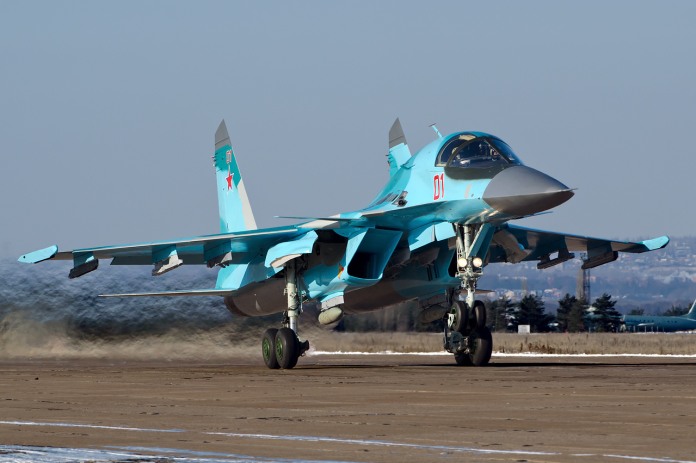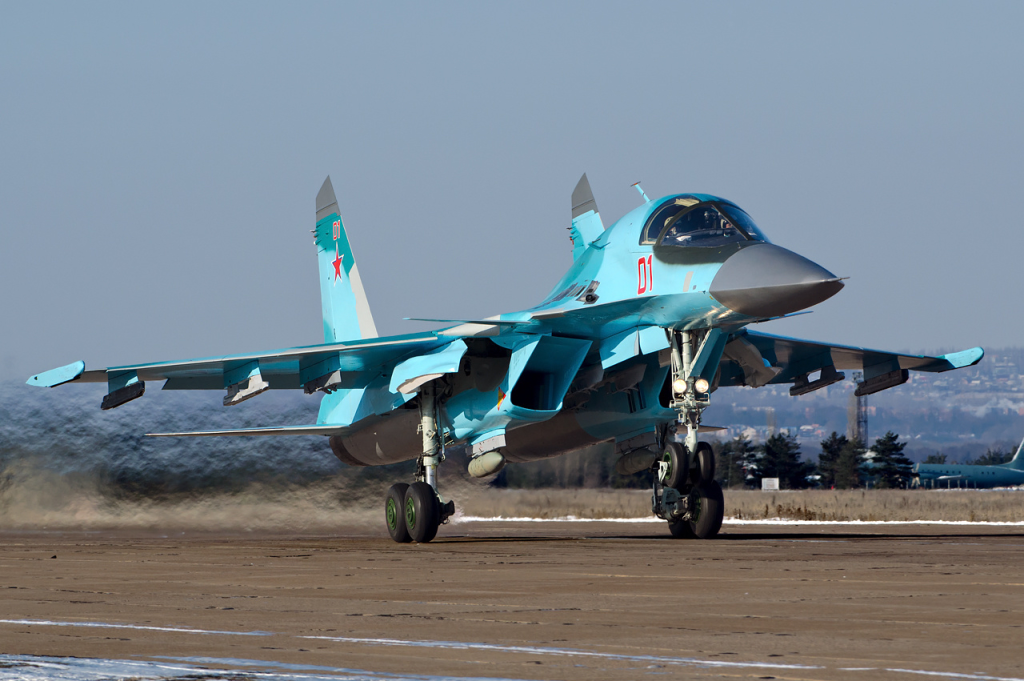
What makes a modern fighter dominant brute speed, stealthiness, or superior sensors? Russia’s new entrants in the combat aviation fleet give an ambiguous answer, combining Cold War roots with modern engineering. These planes, produced in the crucible of geopolitical necessity and technological aspiration, both exemplify and are limited by Russia’s aerospace sector.
Though most frontline warriors trace their pedigree back to Soviet-era offerings, the last several years have also witnessed the inducting of new-generation and upgraded variants. Ranging all the way from stealth-oriented prototypes to highly modernized multirole workhorses, all the platforms also tell the story of development, potential, and battlefield performance.
Following is a closer look at five of the latest Russian fighter jets currently defining the nation’s aerial inventory.

1. Sukhoi Su-57 “Felon” – Russia’s Fifth
The Su-57 is the most modern fighter in the Russian inventory, with missions for air superiority, ground attack, and air defense suppression. Announced in 2002, it flew for the first time in 2010 but has proceeded at a snail’s pace in terms of production to January 2025 just 4 to 15 operational examples are known to be in service.
Constructed with composite materials making up approximately 25% of its frame and with radar-absorbing coating, the Su-57 features internal weapons bays in the interest of minimizing the radar signature. With its swept wings, canards, and thrust-vectoring tailplanes, its aerodynamics permit angles of attack in excess of 60° and it has much agility. The AL-41F1 engines power existing variants, though the newer Su-57M variant will receive the more powerful Izdeliye 30 with increased prospect of higher thrust and superior supercruise capability.

Avionic equipment includes an AESA X-band radar, stealth detection-capable L-band side radars, and an “intelligent skin” sensor network with 360° awareness. Armament includes RVV-series air-to-air missiles to Kh-series air-to-surface missiles and guided bombs. Highly armed for its size, even the most experienced analysts such as Alex Hollings have opined its radar cross-section may be 20–30 times higher than the F-22’s and thus may negate the stealth aspect.
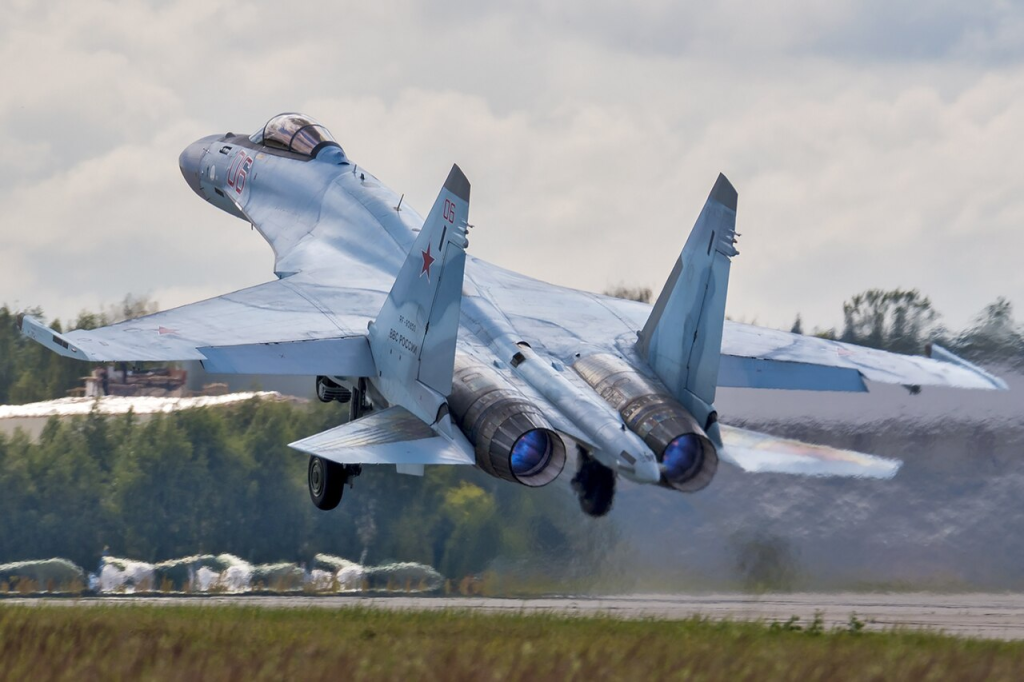
2. Sukhoi Su-35S “Flanker-E” – The Pinnacle of Fourth
The Su-35S is a radical modernization of the Su-27 Flanker with shed canards for simpler aerodynamics and with the use of radar-absorbent materials to minimize frontal radar cross-section to between 1 and 3 m². Fitted with AL-41F1S thrust-vectoring engines generating up to 32,000 lbf each, it has limited supercruise and extreme post-stall maneuverability.

Its N035 Irbis-E PESA radar provides detection of targets the size of fighters at 400 km with the ability to track 30 targets at once, and the OLS-35 IRST provides passive detection to 90 km in the rear hemisphere. The Su-35S in battle has performed successfully in Syria and Ukraine, among others deploying the R-37M missile at ranges in the vicinity of 400 km. That notwithstanding, losses at the hands of advanced SAMs such as the Patriot indicate the weakness of non-stealth fighters in contemporary combined-arms air-defense scenarios.
Export history highlights its geopolitical significance China bought 24 examples, and airframes in the Egyptian order that then proceeded to Algeria and possibly Iran in response to U.S. sanctions pressures.

3. Sukhoi Su-30SM/SM2 – Twin-Seat Multirole Endurance Fighter
Derived from the Su-27, the Su-30 features a twin-seat cockpit for the pilot and weapons systems officer to allow easier mission coordination during long-range sorties. The SM and SM2 models accommodate newer avionics with the SM2 employing the Irbis-E radar with 400 km detection ranges.

Twin AL-31FP engines yield 27,000 lbf each, with speeds at Mach 1.75 and ranges of 1,864 miles in operation. A broader fuselage houses additional fuel, and in-flight refueling adds to endurance. A multirole Su-30 can carry extensive stores of air-to-air and air-to-ground ordnance in either home or export applications.
Not stealthy, its combination of range, payload, and crew capacity also impart the attributes of a strategic asset for long-term roles in the type of mission involving long loiter time and complex strike coordination.
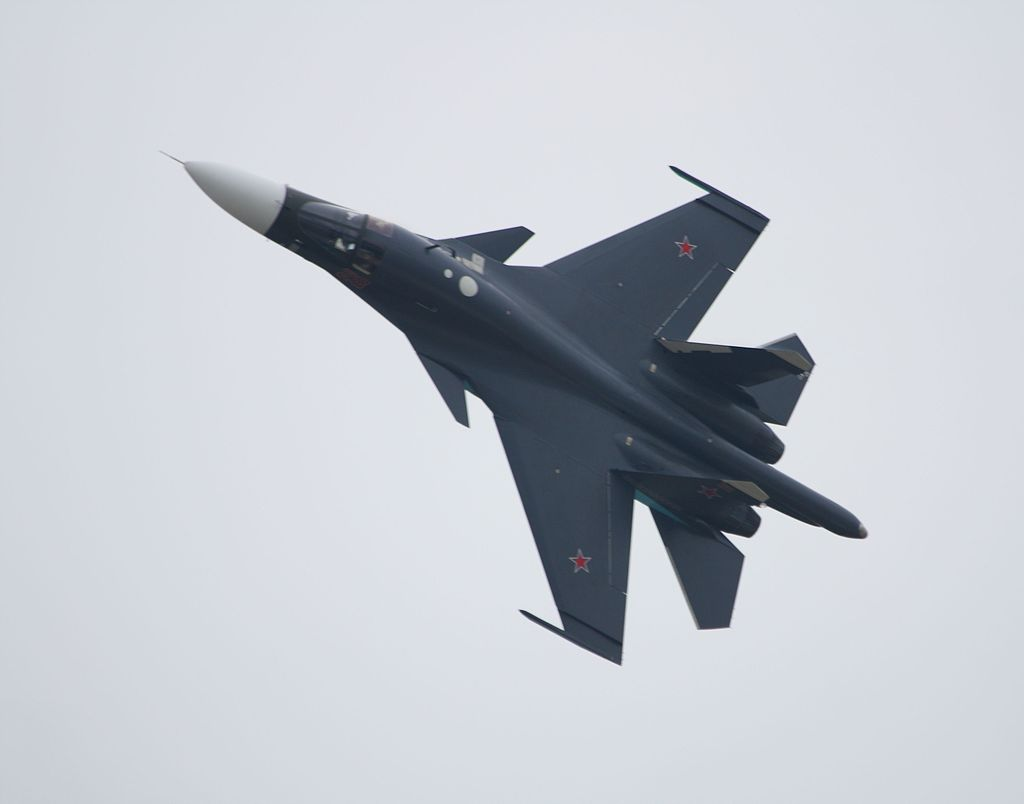
4. Sukhoi Su-34 “Fullback” – Armored Tactical
Development of the Su-34 took decades, between the prototype in 1990 and official service entry in 2014. Although having the Flanker airframe basis with distinct duck-bill nose and side-by-side cockpit, it was designed essentially as a low-level penetrator in replacement for the Su-24 and other strikers. Its cockpit with titanium armouring is 17 mm thick and shields both crew and avionics against small-arms penetration and the fragments of missiles.
Intended for the strike role, the Su-34 has the capacity to carry ordnance of 14,000 kg in 12 hardpoints like Kh-31 anti-radiation missiles, Kh-35 anti-ship missiles, and the smart bombs of the KAB-series. In Syria, it fared well in permissive atmosphere but in Ukraine resorted to low-level unguided bombing sorties owing to munitions availability with consequential exposure to threats by the MANPADS and SHORAD.
More recent innovations entail the extensive usage of UMPK glide-bomb sets to transport heavy FAB-series bombs at standoff distances with an expanding role becoming that of the high-payload glide-bomb delivery aircraft. The Su-34M upgrade centers on expanding standoff with superior sensors and electronic warfare suites.

5. Mikoyan MiG-35 “Fulcrum-F” – Modernized Multirole Light Fighter
The MiG-35 is the latest development in the MiG-29 line, revealed in 2017 as a 4++ generation fighter. The new fighter has a reworked airframe, RD-33MK engines generating 7% more power than the originals, and an optional Zhuk-AE AESA radar with the ability to monitor 30 targets at 100 miles. Top speed is Mach 2.25, range is 1,242 miles, and service ceiling is 52,000 ft; the MiG-35 is qualified for both air superiority and ground attack missions. Armament consists of R-73 and R-77 air-to-air missiles, guided bombs and rockets, and the 30 mm GSh-30-1 cannon.
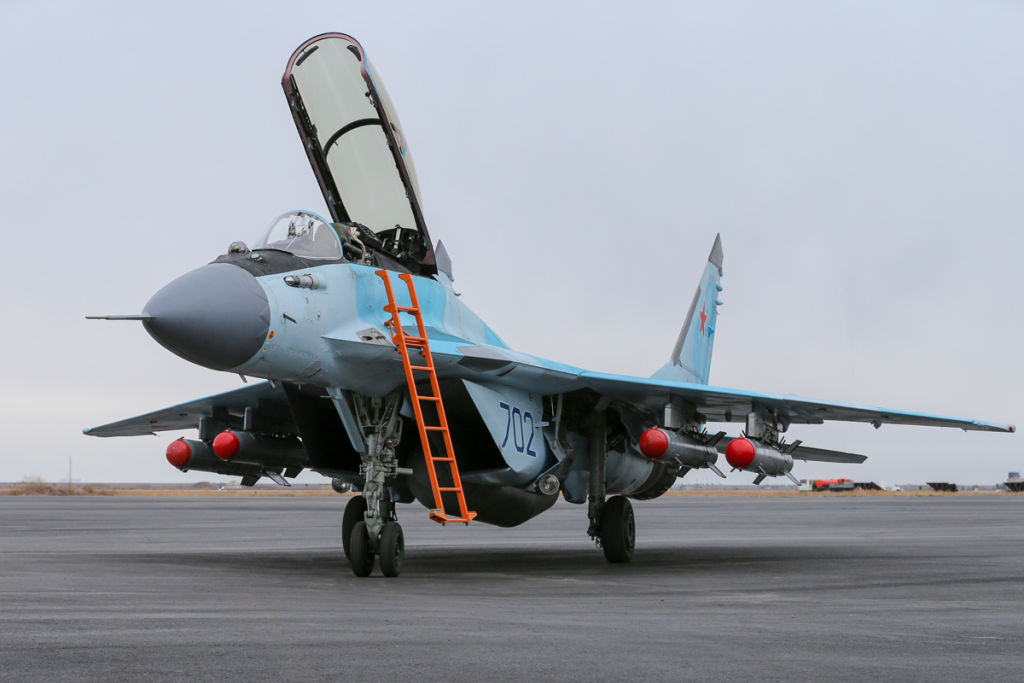
Sophisticated avionics like helmet-mounted sight, latest glass cockpit, and infrared search and track equipment improve situational awareness. Not withstanding its potential, the MiG-35 has failed to garner export sales with just six in Russian service. Media accounts of radar and engine troubles have also constrained sales to the extent that the difficulties of the light fighter program of Russia to compete with established Western designs have again become vividly apparent. Russia’s latest fighters represent a transitional phase in its airpower approach juxtaposing the development of fifth-generation stealth with the evolution of established fourth-generation platforms.
The Su-57 attempts to compete with Western stealth fighters but suffers downtime and performance challenges. The Su-35S and Su-30 variants provide powerful kinematic and multirole airframes, whereas the Su-34 counters changing threats with standoff munitions. The MiG-35 is highly technical but also plays niche role. They create an effective fleet within the bounds of economic determinism, export politics, and the changing imperatives of modern conflict.
